Last updated on September 25, 2025
The vast majority of the backgammon sets recommended by Deluxe Backgammon are wooden. Below is a detailed guide on the types of wood that are commonly found in the backgammon sets we recommend. Additional types of wood used in backgammon sets will be added when uncovered.
Ebony
Ebony is a dark, dense hardwood that comes from a small, slow-growing tree. It is considered to be a luxury wood. Ebony is dense enough to sink in water. It is very finely grained and has a very smooth finish when polished. It is considered to be endangered in many regions and, as such, is a rare and expensive wood. Ebony is most commonly used in luxury backgammon sets. Care should be taken to make sure this wood has been sustainably sourced.
Boxwood
Boxwood is a light-coloured wood that is used to make checkers for backgammon sets. It comes from a small, slow-growing tree and has a fine, even texture and a natural sheen. It is a dense wood that is very robust and ages nicely. Boxwood comes in various grades and can be seen on backgammon sets at opposite ends of the price spectrum. The Boxwood tree is commonly used to form hedges. It is not an endangered species.
Ebonised Boxwood
Ebonised Boxwood is a version of boxwood that has been stained a dark colour, such as ebony. Because boxwood is cheaper than ebony, it is often used as an alternative to real ebony. It is commonly used to make dark backgammon checkers.
Oak
Oak is a type of hardwood that comes from the oak tree native to the Northern Hemisphere. There are around 600 species of oak. They are long-living, slow-growing trees. Oak wood is very strong, heavy and durable. It has an attractive light colour with a prominent grain. Due to its robust nature, it has been used as a building material for thousands of years. Oak can be used to create the backgammon cabinet or be turned into checkers. It is not an endangered species, but should still be sourced responsibly.
Walnut
Walnut is a dense, dark wood with red, purple and yellow tones. It is commonly used to fashion the backgammon cabinet or used for veneers to form the dark points. Walnut is a popular wood due to its aesthetics. It has a tight grain and polishes well. Walnut is very robust, making it perfect for the construction of backgammon sets. Although not endangered, Walnut should be sourced sustainably.
Olive wood
Olive wood is derived from the olive tree, a species of small, fruit-bearing trees found in much of Africa, the Mediterranean Basin, the Middle East and southern Asia. It is very hard, strong and durable. Because of its versatile nature, it can be used for backgammon cabinets, checkers or veneers. It is deep brown in colour with strong, oil-like grain patterns that are a beautiful distinguishing feature. It is because of these patterns that every olive wood product will be unique. Olive trees are slow-growing, but can live for hundreds of years. While they take a long time to grow, the wood is often a by-product of the agricultural industry, since trees eventually stop producing good fruit. This makes olive wood a sustainable material.
Mahogany
Mahogany is a rich hardwood that has a deep red hue. When first harvested, it is a lighter shade of red, but it begins to darken with age, obtaining a deep reddish-brown colour as it seasons. In some parts of the world, it is becoming very rare and valuable. There are more than 70 species of Mahogany, more than half of which are endangered. African and Brazilian Mahogany, in particular, should be avoided as they are critically endangered. It has traditionally been the wood of choice for luxury cabinet and furniture makers. It is prized for its beauty, durability, and colour. Because it has a dense grain pattern and a solid internal structure, it is perfect for constructing backgammon cabinets.
Wenge
Wenge is a very dark wood that is close to natural ebony in colour. It is African in origin and is currently listed as endangered due to over-harvesting. All wenge wood should be sustainably sourced. In certain lighting conditions, wenge can exude a purple-bluish hue. Wenge is often used in backgammon set construction and is considered a more cost-effective and sustainable alternative to ebony. The wood is popular in woodworking because of its dimensional stability and colour contrast when mixed with lighter woods such as maple.
Maple
Maple is a hard, but light wood that is very light in colour. It is often used to create the light coloured points on the backgammon playing field. Its light colour contrasts well with a deep dark wood such as wenge or ebony. Maple is a stable wood that is available in abundance in certain parts of the world.
Sheesham
Sheesham is a fast-growing and hardy rosewood tree native to the Indian Subcontinent. It is medium brown in colour and is reasonably dense. When polished or waxed, it can develop very attractive patterns and grains with a warm coffee tone. Sheesham is considered to be among the finest cabinet and veneer timbers. It is a stable wood that can be used to make backgammon cabinets. It’s an inexpensive wood and is readily available in large quantities.
Tulipwood
Tulipwood is the pinkish-yellowish wood coming from the tulip tree, found in North America and some parts of China. It is widespread and known to be one of the more sustainable wood types. The wood is very light but strong and is used in many applications, including furniture, cabinets and veneers. Tulipwood is easy to work with and finishes to a fine, smooth surface. It can also be stained very easily and is often used as a low-cost alternative to walnut and cherry. Tulipwood veneers are commonly used to form the inlaid points on the backgammon playing field.
Rubberwood
Rubberwood is a light-coloured medium-density hardwood obtained from the rubber tree. It is usually harvested from trees grown in rubber plantations that no longer produce latex. Rubberwood is commonly listed as an “environmentally friendly” wood, as it makes use of trees that have already served a useful purpose. Rubberwood has very little shrinkage, making it one of the more stable construction materials available for furniture, toys and kitchen accessories. It is easily worked and takes on stains uniformly. Rubberwood is also known as Hevea wood.
Babul
Babul wood is a flowering plant tree in the Acacia family. It is native to Africa, the Middle East and the Indian subcontinent. It is known to have some medicinal properties, and the tender twigs are used as toothbrushes in South-East Africa and India. Babul is a popular material to work with for several reasons. It is affordable, easy to work with, durable, and sustainable. Babul has a naturally smooth texture, and the colour can range from light amber to dark mahogany.
Rosewood
Rosewood refers to any of a wide number of richly hued timbers, often brownish with darker veining. The group that rosewood belongs to is the Genus Dalbergia. The most notable rosewood in the Western world is the wood of Dalbergia nigra. It is best known as “Brazilian rosewood”. This wood has a strong, sweet smell, which persists for many years, hence the name rosewood. It is also known as palisander.
Playing experience
Beyond looks, the choice of wood transforms the backgammon experience. Dense varieties like ebony or walnut deliver a crisp, resonant sound when pieces slide or dice tumble. This is a sensory thrill many seasoned players consider inseparable from live play. Each timber’s acoustic signature shapes the elusive “feel” of a deluxe backgammon set.
Weight matters too. Heavier boards anchor firmly, resisting slips even in spirited contests. However, this benefit must be weighed against portability needs, especially for tournament players who travel with their boards to different venues.
Texture tells its own story. Open-grained woods such as oak or ash give a rugged touch, while maple or cherry offer a silkier glide. This subtle difference changes how smoothly pieces travel across the board. This is a detail that casual players may ignore, yet enthusiasts will almost certainly notice.
Related content
Wikipedia – list of wood types.


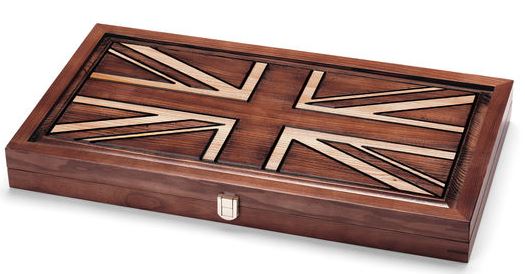
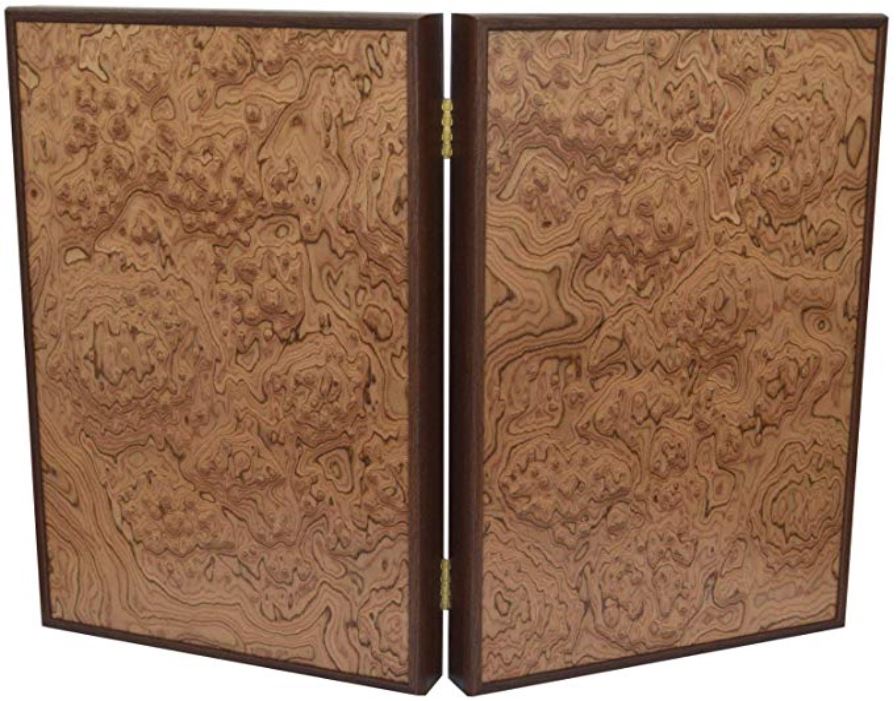
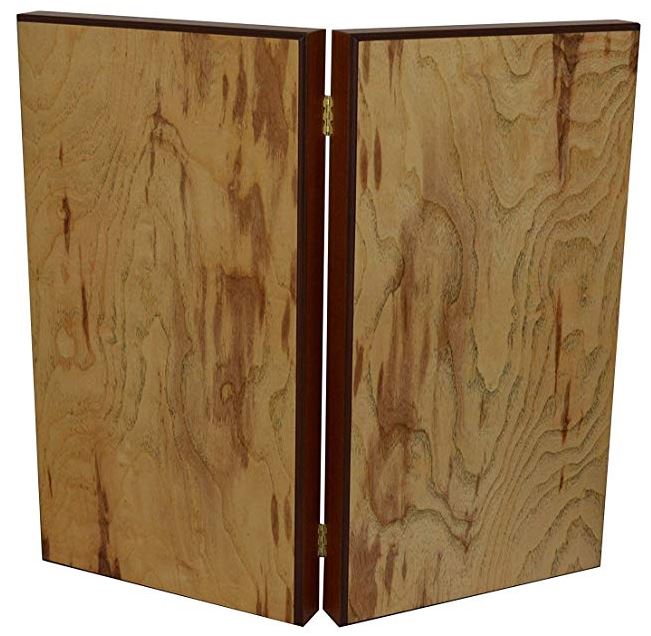
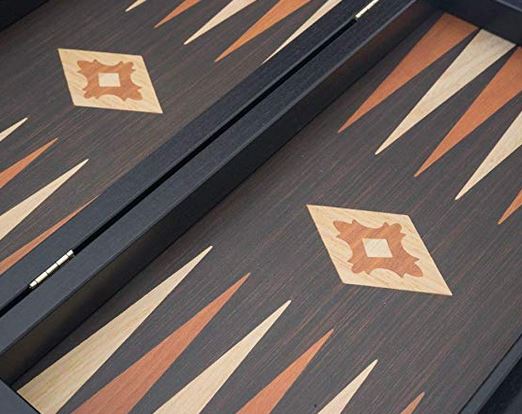
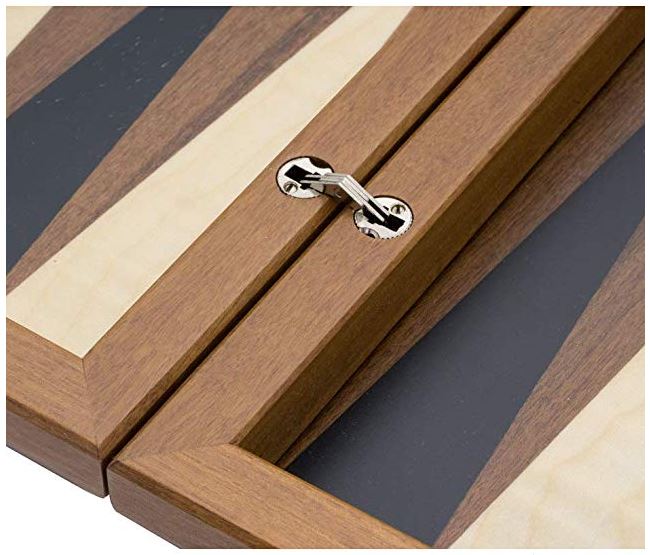
I have a backgammon set as a family heirloom. It must date from the early 20th century and its supposedly made of acacia wood, with cedar wood checkers and has brass furnishings. Its in great condition and we still use it on family backgammon nights. It has wooden dice, but they aren’t matching and there are no dice cups. It is still a pleasure to play backgammon on the old family set.
Wow, this post has given me useful info and answered some of my questions. I have a family set that looks very similar to the old rosewwod backgammon set in the photos. I’m tempted to getm it out and play a game, but I’m a bit rusty.
Hi Felippe, I am pleased the post was useful. Why don’t you get that old rosewood backgammon set out for a game? Backgammon is a great social game for friends and family. You might be a bit rusty, but you can refresh your self on a simple set of backgammon rules here. The back to basics post will refresh your memory on the basic concepts of backgammon. And why not read, how to improve your backgammon game? Thanks for taking the time to comment, Deluxe Backgammon.